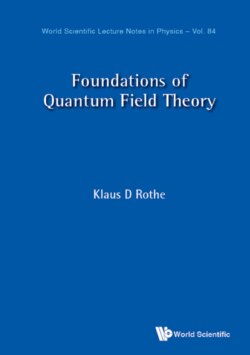Читать книгу Foundations of Quantum Field Theory - Klaus D Rothe - Страница 12
На сайте Литреса книга снята с продажи.
2.2Classification of Lorentz transformations
ОглавлениеThe Lorentz invariance of the scalar product vμvμ = v2 allows us to divide the 4-vectors into three classes which cannot be transformed into each other by a Lorentz transformation:
(a)vμ time-like (v2 > 0)
(b)vμ space-like (v2 < 0)
(c)vμ light-like (v2 = 0)
This means in particular that space-time separates, as far as Lorentz transformations are concerned, into three disconnected regions referring to the interior and exterior of the light cone x2 = 0, as well as to the surface of the light cone itself. The trajectory of a point particle localized at the origin of the light cone at time t = 0 lies within the forward light cone; Moreover, if we attach a light cone to the particle at the point where it is momentarily localized, the tangent to the trajectory at that point does not intersect the surface of that light cone.
The Lorentz invariant
taken along the trajectory of the particle is just the proper time, measured in the rest frame of the particle.
From (2.8) follow two important properties of Lorenz transformations:
implying
Note that this allows for four types of transformations which cannot be smoothly connected by varying continuously the parameter labelling the transformation. We thus have four possibilities characterizing the Lorentz invariance of the differential element (2.2):
Only the first set of transformations is smoothly connected to the identity and hence form a Lie group. The remaining transformations do not have the group property. They are obtained by adjoining to the transformations in space reflections, space-time reflections and time inversion, respectively, as represented by the matrices
Only represents an exact symmetry of nature.
